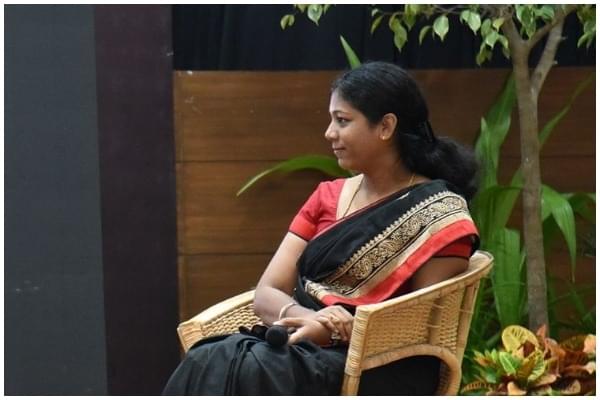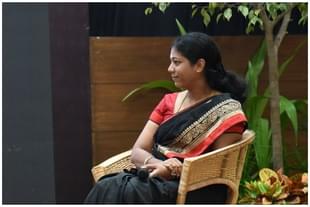Culture
S‘tree’ Shakti: Why The Treepedia App From TN Woman Forester Needs To Grow Into A Pan-India Outlook For Jal Shakti
Sumati Mehrishi
Jul 20, 2019, 01:05 PM | Updated 01:05 PM IST
Save & read from anywhere!
Bookmark stories for easy access on any device or the Swarajya app.


Farmers often face the dilemma regarding trees they must choose for inter-cropping. Sometimes, they make choices that do not eventually go with their own farming needs or ground water conditions. They seek an expert's intervention in helping them make that choice. They need guidance on how they can bring a balance in cropping with the help of a tree and crop combination — through the right inter-cropping suitable for their field, their means and crop.
What can be helpful? Perhaps, a common district/state or a pan-India source that makes them aware of the tree heritage around them and plantation possibilities as per their needs, region and capacity.
I was in Bangalore last month and noticed things and aspects common in Dehradun, Delhi, Chennai and Bangalore — when it comes to trees and rains. Pradip Krishen's magnificent book Trees of Delhi has been a good companion, but it can't pop up every time one is out in a different city, as in Bangalore, when you want to identify a tree not seen before. Bangalore has Bangalore trees (some of them common in your own city/village/state). Tamil Nadu has its own heritage covering urban, rural and forest spaces, and so on.
People who live in urban spaces are realising the growing need to know trees and related survival stories.
If we wish to know, adore, protect and preserve trees, we must know them as the ecological entities they are, who they are, where they belong, and how many and how much you need of them (if you are lucky to be able to plant them), in farm land, urban gardens, or foresting — these are some aspects enthusiasts and farmers wish to know.
Recently, a new unified Jal Shakti ministry was launched. As India becomes aware of its deepening water crisis, it becomes more important to know the value of trees in our preparation to face realities surrounding the crisis. Tree plantation, and the idea of a consistent and sincere follow-up of the saplings planted — in order to make them survive is gaining seriousness among common folks. Rains are the soul of both ‘jal’ and ‘vriksh’, and women celebrate both in day-to-day life, tradition, or work.
The idea of celebrating monsoon (in its abundance or scarcity) by bringing trees and tree plantation to focus led me to the idea of the role women play in preserving trees and forests. That led me to the subject of the success of the Maiti Andolan in Uttarakhand. While I was working on the article, people from the region mentioned the importance of inter-cropping by using trees and raising them.
A local woman I spoke to mentioned the importance of trees surrounding agricultural land in the Kumaon and Garhwal regions. Inter-cropping engages Indian farmers.
Sudha Ramen, an Indian forester and recipient of the Dr Kalam Innovation in Governance Award, recently emerged as a change maker in forestry. She is at the cusp of many aspects that surround trees, people and region, farming and forests. In 2018, she developed an app called Tamil Nadu Treepedia — a glossary of native trees found in the state.
It provides access to the present-day forestry knowledge repository and linkages and aims to connect people, trees and resources, and provides guidance to those farmers who want to look beyond mono cropping.
It might also appeal to those who want to strengthen the presence of trees and forests in and around temple life.
Ramen is one of the many women helping nurture trees and forests. Treepedia, her work, as a platform, touches upon a wide range of concerns and knowledge areas that currently engage and occupy environment-conscious people.
But more than anything else, I see Tamil Nadu Treepedia as a powerful tool for creating pan-India awareness, conscious and inspiring solid work relating to agriculture and forestry. It has the capacity to bridge India’s Jal Shakti vision with vriksh shakti — the power of trees and forests.
Uttar Pradesh in particular could find a lot of inspiration (and ideas) in this app and Ramen’s evolving work. The app — whether adopted, or adapted, or imbibed, pan- India — could prove to be a helpful and valuable element in all stages of the Jal Shakti vision for decades to come.
Below are edited excerpts from the email interview.
SM: What led you to the concept and the making of Tamil Nadu Treepedia?
SR: The information about trees was available mostly in books or as research papers. We had a lot of resource material on trees, but it wasn’t being used in the real world, especially by farmers and tree growers, who were not aware of it. That’s when I thought that this information should reach those people who actually need it. I wanted to bridge that gap and create a digital encyclopedia of trees beneficial to the farmers and tree growers. This app is meant to reduce mono cropping and offer the farmers, as well as other interested groups, NGOs and anyone interested in gardening, with more choices. I wanted to encourage the growth of native trees.
SM: Tell us about the process and the support you got for the project.
SR: This application was developed with my project note. Tamil Nadu state government under the scheme Tamil Nadu Innovative Initiatives funded this project. Tamil Nadu Forest department, my parent department, supported me by all means to complete this project. Information from the 100 years of forest research that was collected from several sources. Presently, it is developed as a one-way application wherein the forest department will be able to update or add any information relating to tree cultivation through this app.
SM: What does the app offer?
SR: Tamil Nadu Treepedia has four sections: trees categorised based on their species, types, that is, the uses we derive out of them, the location based on the districts, and fourth — the “Tree Finder” — a refined search, where you put in the soil type, terrain type and the rainfall in your region in order to know what are the trees that best fit these criteria. Apart from this, the app has useful information like video tutorials on various planting techniques, Agroforestry models based on zones, plantation calculator, glossary, and a locator to find the nearest forest office et cetera.
SM: Where did you grow up and how did your interest in trees develop?
SR: I grew up in Neyveli, a planned township in Cuddalore district, Tamil Nadu. It is there that I got interest in plants and gardening — there was a backyard attached to each house. I used to help my mother in raising plants. Later, I did biomedical engineering and was working for Wipro. With the deep interest I had for plants, I opted to appear for the Civil Service Exam and got selected in the Indian Forest Service. It was during my training that I got to learn more about the Forest and Environment.
SM: What makes women the nurturer of trees and how can they contribute to forestry in bigger interventions?
SR: Naturally, women are more attached to nature. I strongly believe that each woman is contributing towards the conservation of nature and the environment. We have learned about the Bishnoi women who adore trees and sacrificed their lives for protecting them. Even today, we have many tribal customs that (involve) the worship of trees and nature (sic). In my profession, too, I see more women, especially in the fringe forest villages, doing their best to protect the forest and derive sustainable benefits from those forests. There are many woman self-help groups that strive hard to green our country. They contribute towards raising nurseries, planting trees, or involving in forest-based cottage industry. We need to support and promote this sector for more women to come forward. This would create a green brigade.
SM: Treepedia could also help weave a stronger tree-crop relationship. Your comment.
SR: Yes, that is the basic idea of developing this app, too. This app clearly specifies the tree-crop relationship, by which the farmer can supplement his income. The details of inter crops and the inter-cropping models are also provided in the Treepedia app.
SM: Which tree fascinates you?
SR: It is Ficus Bengalensis – Banyan tree. If we are able to raise up one tree per km, then this would help us largely to revive most of the faunal population, like birds, reptiles and insects. In forestry terms, we call this tree as 'Keystone Species', which means “a unique and crucial role in the way an ecosystem functions. Without keystone species, the ecosystem would be dramatically different or cease to exist altogether”. One banyan tree is a micro forest in itself.
SM: If you recommend the planting of trees this rainy season (monsoon entry to exit), which trees would they be?
SR: Summer is a season for mangoes. Each of us can try to collect these seeds and try to raise saplings or just throw these seeds in nearby barren lands. We should also ensure that these trees are protected in the initial years of their growth. Similarly, with the onset of monsoon, it is the right time to prepare seed balls with seeds of native trees (locally common tree species) and get them dispersed in the forest lands with the help of the forest department. We should pay more caution that we do not promote any exotic variety of trees. I would strongly recommend that each one of us should plant and take care of at least one tree every year.
SM: You are recipient of Dr Kalam Award for Innovation in Governance. What does it mean to you?
SR: It is an important milestone in my career. I was very happy to represent my department in the Dr. Kalam summit. The app was well recognised and the very idea was much appreciated. I was the first Indian Forest Service Officer to receive this prestigious award for Innovation in Governance.
SM: Forest/s you wish you were currently at?
SR: Most foresters in the country adore Jim Corbett National Park and Tiger Reserve (Uttarakhand) and this place is one of my favourites, too. In Tamil Nadu, Mukurthi National park is a wonderful, pristine forest. As a forester, I would like to work more in urban areas to develop urban forests and green spaces. This would help in balancing the ecosystem.
Sumati Mehrishi is Senior Editor, Swarajya. She tweets at @sumati_mehrishi





